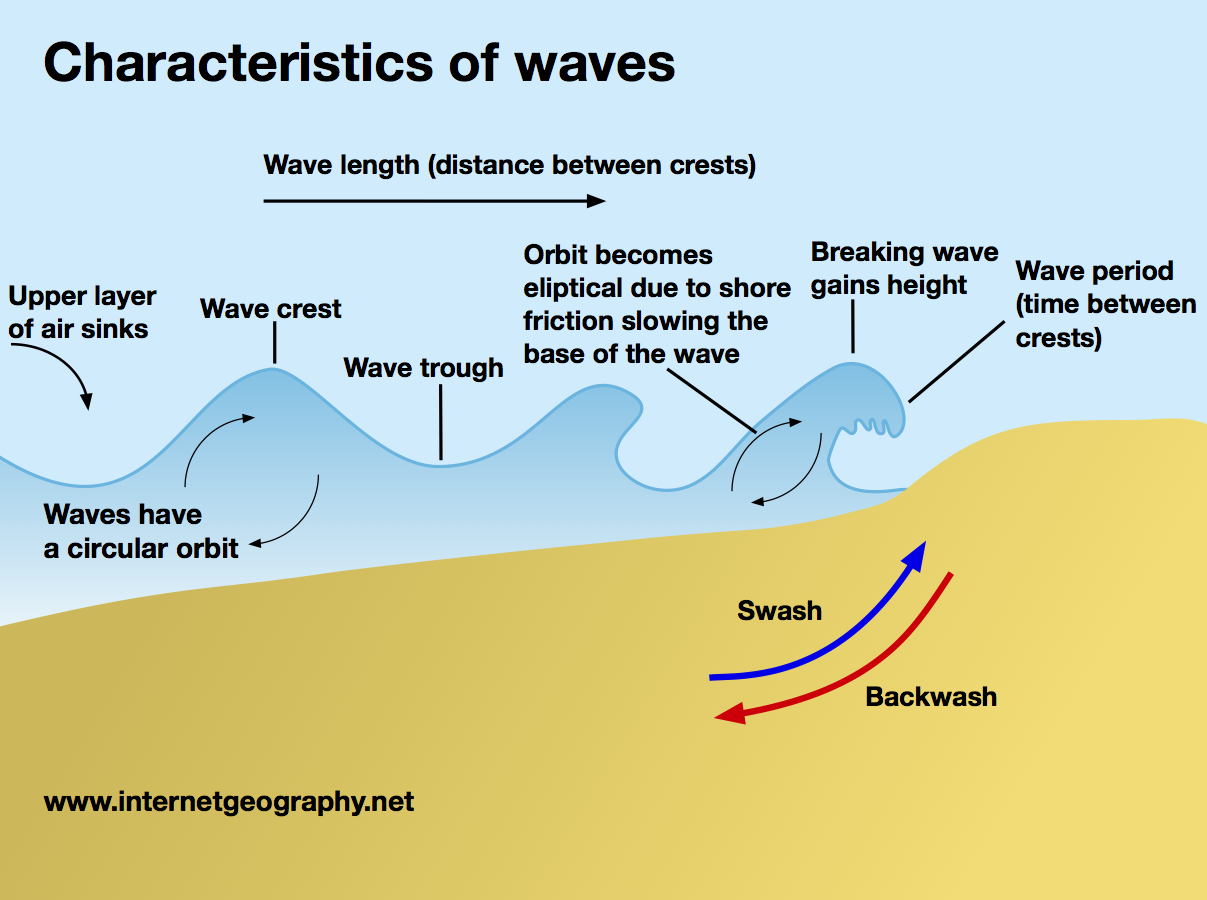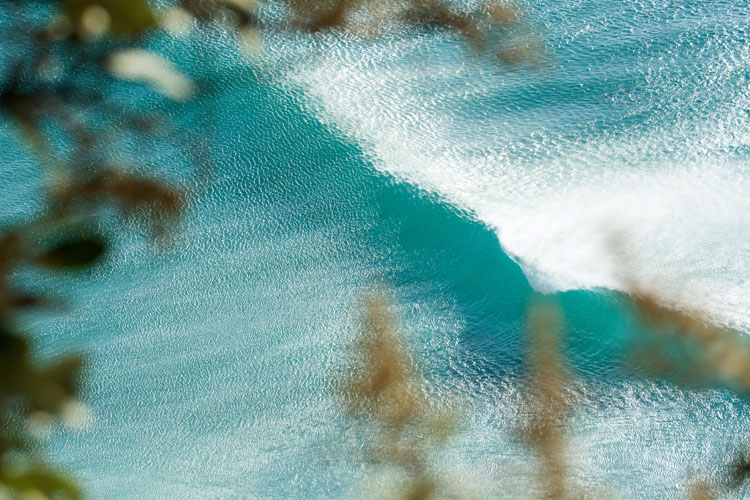
When the crests break on the surface of the water they are called whitecaps. Eventually the top of the wave rolls over causing the wave to break.

Waves begin to break when the ratio of wave.
Why do waves break as they approach the shore. Why do waves break as they approach the shore. When the Energy Meets the Ocean Floor As waves reach the shore the energy in front of the wave slows down due to friction with the shallow bottom. The wave breaks and it usually does so in water depth that is 13 times the wave height.
Why do waves break as they approach the shoreline. When the Energy Meets the Ocean Floor As waves reach the shore the energy in front of the wave slows down due to friction with the shallow bottom. The wave breaks and it usually does so in water depth that is 13 times the wave height.
Why do ocean waves break as they approach the shore. Is it because of the principle of superposition. Would it be described as constructive or destructive interference.
There are four basic types of breaking waves. Spilling plunging collapsing and surging. Spilling waves are gentle waves with crests that break softly towards the shore.
These waves break when the ocean floor has a gradual slope. Plunging waves break when the ocean floor is steep or has sudden depth changes. Waves break when they reach a shallow coastline where the water is half as deep as the wave is tall.
As a wave travels across the open ocean it gains speed. When a wave reaches a shallow coastline the wave begins to slow down due to the friction caused by the approaching shallow bottom. This refraction occurs for the same reason that any wave refraction does - the wave changes speed slows down in this case as it enters shallower water.
Water waves travelling in deep water move at a speed that is dependent only on their wavelength but as they reach the shallower water near the shore they are slowed. Figure 1031 As waves approach shore they touch bottom when the depth equals half of the wavelength and the wave begins to slow down. As is slows the wavelength decreases and the wave height increases until the wave breaks Steven Earle Physical Geology.
There are three main types of breakers. Spilling plunging and surging. Why do waves generally tend to rise near the shore.
The waves possess considerable amount of energy when waves are far away from shore they have ample space to expand but as they move towards shore this space goes on decreasing the water column beneath them reduces and bottom comes much closer this constricts the waves and they tend to rise upwards before finally breaking. Waves do the same thing and that is when they break. As waves approach the shore the water is shallower and the bottom of the wave starts to.
On a moderate slope the waves get closer to shore before they break. Because the water shallows more rapidly wave energy is rapidly concentrated into a small area so the waves grow very tall and the crests curl far forward of the troughs. Why do Waves Break When Approaching the Shore.
Uses principles discovered in the laboratory as a basis for interpreting the characteri. Most all waves break toward the shore because that is where waves have to break. A wave can travel any direction but eventually it will hit a shore thus breaking at that shore.
For the waves that are moving in the direction of a shoreline the gradual shallowing of the water as you approach land causes the top of the wave to begin to move faster than the water underneath which is restricted by friction. Eventually the top of the wave rolls over causing the wave to break. As waves approach the shore interaction with the sea floor slows the waves down and the crests of the waves bunch up.
They increase in height as the energy in each wave. Wave is slowed down by friction against the sea bottom while the top of the wave rushes ahead so the wave crest begins to lean more and more forward until it topples over and breaks on the shore. Waves begin to break when the ratio of wave.
In addition to creating the waves in the open ocean wind can have a dramatic effect on the surf at the shore. An onshore wind or a wind that blows toward the shore can cause the waves to break into a rough froth that surfers cant ride. An offshore wind on the other hand blows toward the advancing waves.
A gentle offshore wind is generally considered to be good. When waves break they travel up the beach in a process known as swash and retreat in a process known as backwash. Waves generally approach the shoreline at an angle because they are refracted or bent as they head towards the coast and enter shallower water.
Beach sand tends to be moved sideways along. The size of the wave is generally influenced by the distance the wave travels and the strength and direction of the wind. The top of the wave is called the crest and the bottom is called the trough.
When the crests break on the surface of the water they are called whitecaps. But why do waves break when they reach the shore. Read on to find out.
Begingroup By the way the reason a wave breaks is because the maximum horizontal fluid velocity due to the wave U that is the speed that an orbiting particle possesses as the wave advances is greater than the wavespeed c. Waves can originate far away from the coast in the offshore due to the friction between the winds and surface water. For instance during a storm the winds start blowing creating tiny little ripples.
This increases the grip of the sea surface and while the winds keep blowing the surface of the sea gets messy. The waves start off tall when the water gets shallow like it is near the shore the waves fall and break. Waves breakdown because the floor becomes to shallow for the waves so the bottom of the.
What changes occur in the motion of water within waves as they approach the shore and why do these changes cause waves to break producing different forms of breaking waves dependent on the characteristics of the coastline. There are three major types of breaking waves which are distinguished based on their characteristics. Why do waves bend towards the shore.
When waves meet shallow water they slow down. They always bend towards the shallow side. This is why they bend towards the shore.
It is a process called refraction. It is also why waves appear attracted to.